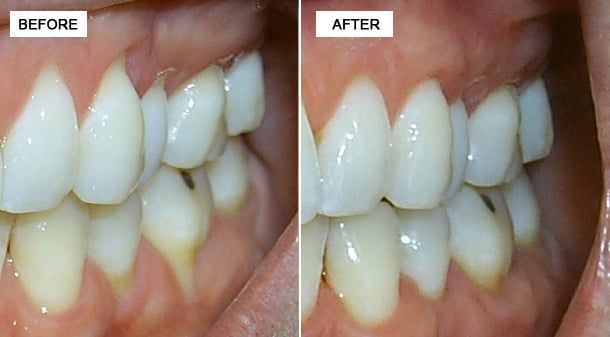Periodontics
Bone Regeneration
When a tooth is lost, both bone and gum tissue compete for the vacant space. The gum tissue generates more quickly than bone, subsequently occupying the space. With a membrane placement we can keep the gum tissue from invading the space, which will ideally give the bone sufficient time to regenerate. Bone regeneration is often used to rebuild the supporting structures around the teeth, which have been destroyed by periodontal disease. Bone surgery may be used to attempt to rebuild or reshape bone. Grafts of the patient's bone or artificial bone may be used, as well as special membranes.
Frenectomy
If a patient has an excess amount of tissue that connects the lower and upper lips to the jaw and gum line, a frenectomy procedure is performed to remove the excess tissue. A frenectomy is either performed inside the middle of the upper lip, which is called a labial frenectomy, or under the tongue, called a lingual frenectomy. Frenectomy is a very common dental procedure in the dental world and is performed both on children and adults.
Functional Crown Lengthening
Periodontal procedures are available to lay the groundwork for restorative and cosmetic dentistry and/or to improve the esthetics of your gum line. Your teeth may actually be the proper lengths, but they are covered with too much gum tissue. Crown lengthening is a procedure to correct this condition.
During this procedure, excess gum and bone tissue is re-shaped to expose more of the natural tooth. This can be done to one tooth, to even your gum line, or to several teeth to expose a natural, broad smile.
Crown lengthening can make a restorative or cosmetic dental procedure possible. Perhaps your tooth is decayed, broken below the gum line, or has insufficient tooth structure for a restoration, such as a crown or bridge. Crown lengthening adjusts the gum and bone level to expose more of the tooth so it can be restored.
Ridge Regeneration
When a tooth is lost and not immediately replaced, the bone reacts to this event by 'shrinking back'. The bone becomes thinner from a width perspective and the bone height is frequently reduced. This process is known as bone resorption. In order to place implants, it is necessary to rebuild the bone width and height through regenerative surgical therapy. Bone grafting of the ridge is almost always required to enable accurate placement of dental implants. The grafting is completed utilizing tissue bank and/or synthetic bone particles combined with collagen membranes. It is a highly predictable procedure.
Socket Regeneration
When a tooth is extracted and an implant is to be placed (either simultaneously or in the future) it is always necessary to complete bone grafting within the residual sockets that are left behind after the roots of the tooth are removed. The shape of the tooth root is always different from the shape of a dental implant and hence there are always residual socket defects (holes) that must be filled in so that there can be excellent contact of the implant to the newly formed bone.
Soft Tissue Grafting
Root exposure resulting from gingival tissue recession may pose multiple problems for patients:
- Undesirable Aesthetics
- Root Sensitivity
- Impaired Oral Hygiene
- Increased Caries Susceptibility
- Teeth May Become Loose
A gingival tissue graft will restore the proper gum tissue structure around the tooth.
